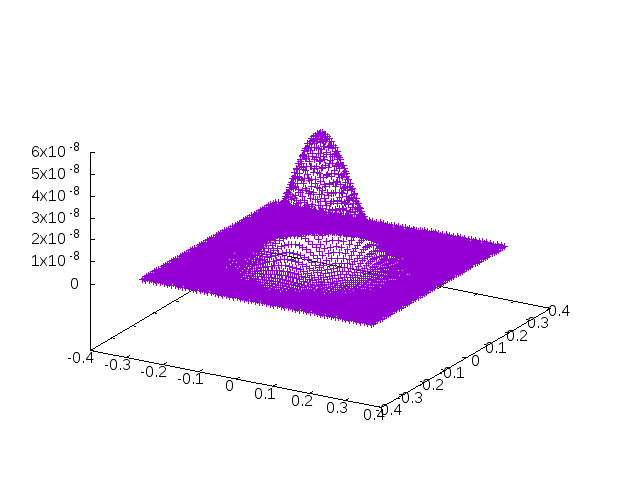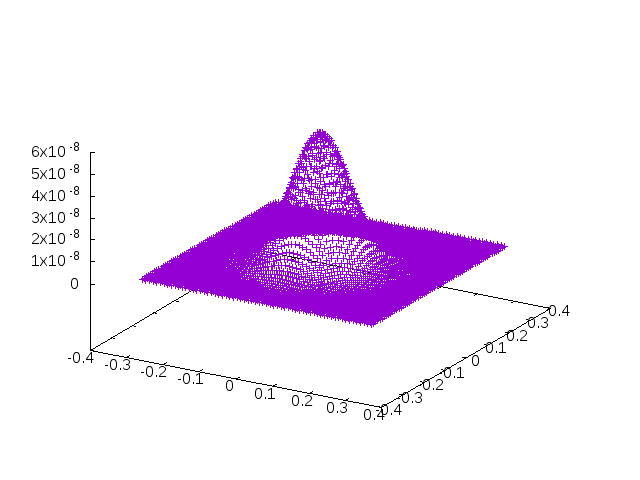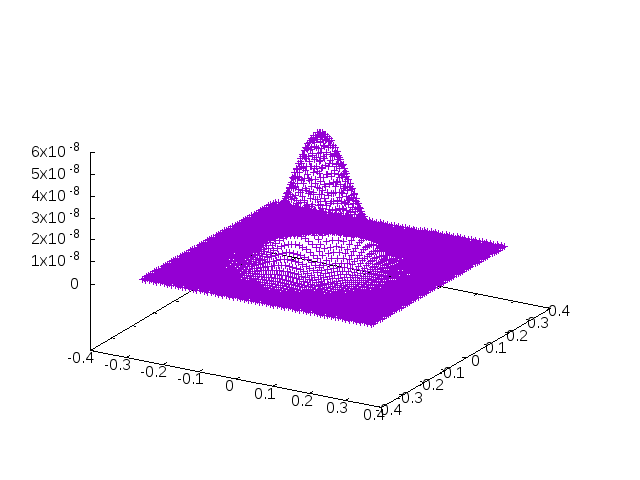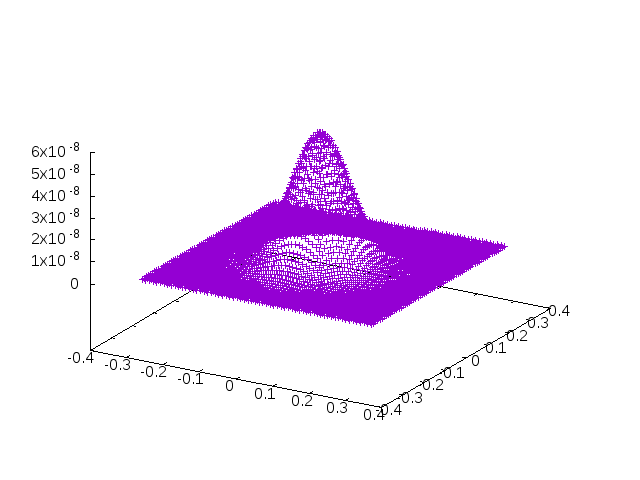diffuse - 3D diffusion equation solver by using finite difference method + CG method(diagonal precondition) + Crank-Nicolson method with MPI.
the result was compared to serial version(cg.F90)
input file: fort.11
$ cat fort.11
¶m0
dt = 1.0d-6 ! stride of time
dx = 1.0d-2 ! stride of x, y, z direction
tol = 1.0d-40 ! convergence tolerance of CG method
diff_coef = 1.0d2 ! diffusion coefficient
/
¶m1
imax = 64 ! global size for x direction
jmax = 64 ! global size for y direction
kmax = 64 ! global size for z direction
/
¶m2
idiv = 1 ! # of division for x direction
jdiv = 1 ! # of division for y direction
kdiv = 4 ! # of division for z direction
! idiv*jdiv*kdiv must equal to total # of processes(np)
! imax/idiv, jmax/jdiv and kmax/kdiv must be an integer
/
¶m3
iter_max = 262144 ! maximum CG method iteration
tstep_max = 100 ! maximum timestep
freq_write = 100 ! frequency of writing the result, write each tstep_max/freq_write time
/
how to run:
$ make # if you have intel compiler and intelmpi, try "make -f makefile.impi.mk" and if you want to disable Crank-Nicolson method, try to remove -D_CN from the makefile
$ vi fort.11 # adjust the parameters
$ ./create_input
$ mpirun -np $NP ./diffuse # or mpirun -np $NP ./diffuse_hyb where $NP = idiv*jdiv*kdiv
$ ./create_output
$ ./create_anime.sh
cpu: Intel(R) Xeon(R) CPU E5-2680 v4 @ 2.40GHz, 28 cores
problem size: 128x128x128
tstep_max : 100
freq_write : 100
with 1 core : 253.9 s
-
2 nodes:
with 32 cores(flat MPI) : 10.7 s(division:2x4x4)
with 32 cores(hybrid) : 8.4 s(division:1x2x2) with 56 cores(hybrid) : 5.9 s(division:1x2x2) -
16 nodes:
with 256 cores(flat MPI) : 5.9 s(division:4x8x8)
with 256 cores(hybrid) : 5.1 s(division:2x4x4) with 448 cores(hybrid) : 1.9 s(division:2x4x4)
compare the results between implicit method and explicit method.
explicit method program is expl.F90.
the animation shows that how a gaussian wave decays at k = kmax/2
dt = 1.0d-6
dx = 1.0d-2
tol = 1.0d-40
diff_coef = 1.0d2
tstep_max = 100
freq_write = 100
stability condition of explicit method(Courant condition):
3*diff_coef*dt/dx/dx <= 1/2
= 3.0
this is instable for explicit method.
the result diverges due to the instability of explicit method...
$ eog gifs/diffuse.expl.1.gif

dt = 1.0d-7
dx = 1.0d-2
tol = 1.0d-40
diff_coef = 1.0d2
tstep_max = 1000
freq_write = 100
stability condition of explicit method(Courant condition):
3*diff_coef*dt/dx/dx <= 1/2
= 0.3
this is stable for explicit method.
this is stable condition, in this case, explicit method converges.
$ eog gifs/diffuse.expl.2.gif

note: calculated diffusion speed is a little bit different between implicit method and explicit method, because implicit method case uses Crank-Nicolson method as well, that is time direction second orcer accuracy so implicit method case is more accurate.
if Crank-Nicolson method is disabled, (remove -D_CN from the makefile) the calculated diffusion speed will be almost the same.

